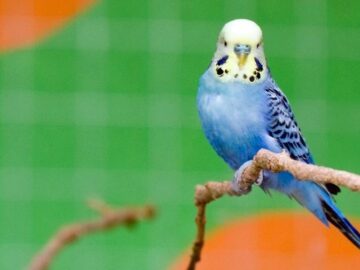Eagles are majestic creatures. Their size and appearance exude strength and power, while their movements, grace, and splendor. No wonder countries like the US chose them as a symbol of their nations. However, there is so much more to these majestic aerial predators than just their looks. Here are six amazing facts about eagles that will blow your mind.
1. Eagles have incredible eyes
Even though they are smaller than us, eagles have almost the same size eyes as we do. However, it’s not just the size that makes their eyes better; it’s a whole lot of other adaptations—including the following:
- They have 5x more cone receptors, allowing them to form crisper images of their surroundings (much like having more pixels for a better resolution).
- The backs of their eyes are also much flatter, enabling their eyes to form a bigger image (like a magnifying lens) for spotting smaller prey even from long distances.
- They have more cone receptor types which let them see more shades of colors. They even have cone receptors that allow them to see in the ultraviolet range.
Courtesy of Frank Cone
2. Eagle wings are for soaring, not so much for flapping
Eagles are known to be high flyers (some species soaring as high as 10,000 to 15,000 feet). Most people think this is only possible because eagle wings are so large that they generate so much lift when they flap.
However, researchers have found that eagles rarely flap their wings in flight. Instead, they rely on thermal currents (warm air currents) that naturally go up. Eagles simply spread their wings to catch these currents, riding them to reach the perfect soaring altitude so they can spot prey from above without spending so much energy.
3. Eagle beaks are made of the same material as your nails
The large sharp beaks that give most eagles their ferocious look are made of keratin, the same material that makes up your fingernails and hair. They also continuously grow like nails, so it’s not much of a problem if they chip or break (so long as the damage does not reach the internal mouth parts).
Unfortunately, they also deform like nails in old age. This can be a problem for them in the wild because they use their beaks for many purposes, including hunting and killing prey, tearing meat for eating, preening their feathers, and even building nests.
Courtesy of Pixabay
4. There are 68 species of eagles in the world
Eagles can be found in almost every continent in the world. However, of all the species of eagles, 54 are found in Eurasia and Africa, 11 in North and South America, and only 3 in Australia.
Some have adapted to living in the cold tundras, others in deserts, some patrol cliffs, and seasides, while the rest still roost in heavily forested areas. Unfortunately, more than half of the 68 eagles are threatened, with some being critically endangered, all because of poaching and rapid habitat loss.
5. Eagles form exceptional partnerships
Eagles are known for keeping life-long partnerships with their mates. Unlike most other species in the animal kingdom, they exhibit the following traits that make them excellent and reliable partners:
- They are monogamous creatures, so they select a single partner which whom they stay for the rest of their lives. Only when the partner dies or does not return will they look for a new partner.
- Couples share responsibilities in taking care of the young. While one of the parents roosts and keeps the eggs warm, the other often goes out to hunt and brings food back for the other.
- Both male and female eagles take turns fixing the nest and raising their chicks. Some eagle couples have even been observed to break routines (hunting and roosting), especially when the nest conditions require immediate and extensive repairs.
Courtesy of Frank Cone
6. Eagles are well-equipped apex predators
Eagles hunt alone, unlike lions, orcas, or other apex predators. However, to be a successful lone hunter, one must be well-equipped to do the job. That’s why the eagle has evolved some of the most impressive arsenals of all predators.:
- It has a huge wingspan allows it to soar, glide, and survey prey from above.
- It has impeccable eyesight for spotting small prey like rabbits, even from several kilometers away.
- Its vast aerodynamic body can dive for prey with speeds of up to 150 to 200 miles per hour, often knocking out or instantly killing prey upon impact.
- It has enormous, sharp, and powerful talons for stabbing, crushing, and impaling its prey.
- It has a big, strong beak for tearing the flesh off of its prey.
- Some eagles even attack from the direction of the sun so that prey won’t spot them until it’s too late.
- Other eagles grab prey, lift them, then drop them off from a deadly height to kill them or break them into pieces.
For Your Child’s Eagle Fascination
Eagles are wild animals, so it’s impossible to own one as a pet. You can, however, collect trinkets and visit the zoo! Here are some ideas to consider:
- Cuddly nights with this plush eagle by Wild Republic Store
- Photographs, quizzes, and all things fun through this book by AMAZING EARTH
- Perhaps a meet and greet in one of these zoos?
Frequently Asked Questions
Do eagles attack humans?
They do, but eagle attacks on humans are pretty rare. Since humans are not on their prey list, eagles often avoid contact with humans. However, when humans approach their nests, especially if they still have eggs or hatchlings, they will defend their territory vigorously by attacking anything it perceives as a threat.
Can eagles be trained or tamed?
Yes, they can be trained. Adult eagles are quite difficult because it takes a long time to earn their trust and even longer to make them follow. However, if an eagle is hand-reared or you have it from when it was a chick, it gets a little easier because trust is built earlier.
Can you keep eagles as pets?
No. In most countries, it is illegal to have eagles as pets. Unless you have a zoo, keeping one can land you in jail. There is currently a global effort to conserve the eagles, and preventing ownership of these birds is just one of the many steps in these conservation efforts.
In support of this, governments worldwide are setting up protected areas for these eagles to give them a chance to survive and repopulate.
How long do eagles live?
Eagles often live to around 20-30 years of age in the wild. At this time, their beaks would have become deformed and their talons too stiff —conditions that would have made it difficult for them to survive.
However, they live longer in captivity since they have vets and caretakers to trim their beaks and provide them with food. Eagles in captivity have been known to reach 50 years old.
What is the largest eagle in the world?
The largest can be defined in weight, length, and even wingspan.
- In terms of weight, the largest eagle is the Harpy eagle, whose weight ranges from 4.4 to 8.3 kilograms.
- The Philippine eagle is the largest in terms of length, standing as tall as 86 to 102 centimeters.
- In terms of wingspan, the largest eagle is the White-tailed Sea-eagle, with outstretched wings reaching as long as 218.5 centimeters.







